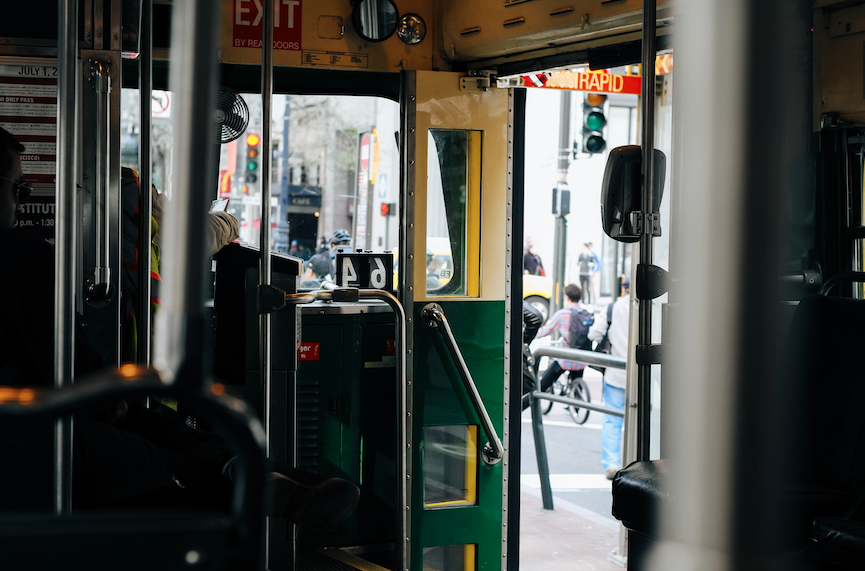The discussion on commuting still revolves around how this process will look like in the future and how will the public transit system in the U.S. survive this pandemic. An aspect less talked about is how much will riders have to pay to get to work in the coming years. What will be the cheapest way to get from A to B in major cities? First and foremost we analysed the public transit option, then we took a closer look at micromobility and ridesharing.
It’s not yet clear when workers will resume their normal daily schedules and routes. Yet, the impact of a dying public transit system is more and more pressing. So far, city dwellers have been relishing in the benefits of remote work, with research pointing to a total of $758 million in savings per day spread across those who used to drive to work. Since the beginning of the pandemic, savings add up to $90 billion across the U.S. or $2,000 per person. And it’s not just money that is being saved, but also a significant amount of time. New Yorkers are saving more than 75 minutes per day, on average, due to work-from-home policies, second only to East Stroudsburg, Pennsylvania. San Francisco metro ranks fifth with an average of 70 minutes saved by ex-commuters. Saving time and money has become appealing for both employer and employee, and it seems this is the way things will be functioning from now on. People are open to rearranging their lives around this lack of commute not only by changing the way they move but also by where they live.
Free public transit?

Last spring, right before the coronavirus outbreak became a cruel reality of everyday life, U.S. cities offering free public transportation were making headlines. Although more popular in smaller urban settlements, such a program was also put in place in Kansas City, Mo. The reason behind this type of initiative is typically the local government’s desire to improve residents’ quality of life. Such a move is more than welcome considering Americans spend nearly 16 percent of their typical budgets on transportation.
The big question now is whether riding the bus, train or subway will cost more or less in the future, given the pandemic and its effects. Transport agencies want to get riders back on board and in order to attract them they spend more on cleaning and hygiene procedures, as well as other upgrades such as apps and online ticketing systems to help avoid contamination. This means that there would actually be a basis for a potential price increase, although this would discourage riders, some of which are unemployed or with reduced incomes. Therefore, the trend is actually heading in the opposite direction—making rides cheaper or free. Capital Metro, Austin’s transport organisation, offered free bus rides from March to June so that passengers wouldn’t have to come into contact with the driver or move around the bus to validate their ticket. Now, only unemployed Americans get to ride for free in this Texas metro.
In September, L.A.’s Metropolitan Transportation Authority started working on a plan to make rail and bus rides free. The proposal should be complete by the end of the year and includes possible funding scenarios. The Metro’s management believes this is a great way to help those whose income was impacted by the pandemic and also encourage ridership, getting cars off roads and to reduce emissions. One thing that will help encourage such measures is the drop in oil prices, already a reality due to increased inventories in the U.S. and predictions on slow demand going forward.
Buy a bike

While free bus rides are tough to beat, micromobility stands a fair chance. The trend in micromobility favors ownership, with bicycle and e-bike sales increasing as opposed to a decrease in use of scooter and bike sharing apps. Sales of electric bicycles in the U.S. increased by 190 percent year-over-year as of June, research by The NDP Group discovered. The spike was generated by the sales of high-end models priced $1,000 and up. This just goes to show that buyers see this as an investment and want to make biking a regular, long-term thing for their commute. There is now even a dedicated online marketplace for those looking for their very own personal mobility device (PMD’s) —the recently launched Ridepanda. Prices for e-bikes on the platform start at $899, while the starting price for an e-scooter is $379. Most manufacturers offer a one-year warranty, but buyers have the option to add an extra year for an extra cost.
Even with only 12 months of warranty—the period of time we assume the vehicle will be used and running smoothly—the monthly cost for the consumer would start at $31/month (+charging) for an e-scooter or $75 for an e-bike (+charging). These are competitive numbers even when put against local transit fares. The cost of charging varies depending on region and battery power of the vehicle, as well as how many charges are needed/how long the commute is. On average, the cost is 4-12 cents per charge.
Ridesharing comes last?

Before the pandemic, the use of e-scooters via rideshare apps was still (quite a big) thing. Prices jumped as fleets expanded with electric vehicles and users were threatening to stop using them because of this.
Now, providers in the micromobility industry are looking at innovative ways to attract new and existing consumers. Recently, Lime announced that it will be offering Wheels electric bikes through its app starting this winter in select cities—Austin, Berlin, Miami and Seattle. This comes after the use of rideshare apps decreased because of the lockdown and extra safety measures. The situation is a bit more encouraging when it comes to e-bikes, as many cities created new bike lanes in the last few months due to traffic conditions brought on by the COVID-19 outbreak.
When it comes to pricing, riding an e-scooter for your commute can have varying costs depending on the city, day of the week and time of day. Unlocking is usually $1 and then users are charged per minute. For example, in its permit application for San Francisco, Lime proposed a $0.29/minute rate. Some providers offer subscription packages that cut a part of the costs. For e-bikes, Lime charges $1 for up to 30 minutes
When it comes to being driven to work via rideshare apps, pricing policies are similar to what we just mentioned for e-bikes and e-scooters. To meet riders’ needs, providers in the segment came up with subscription packages. One option is Lyft Pink, launched last year—for $19.99 per month to encourage increased use and brand loyalty, users get 15 percent off all rides. Uber’s monthly membership is $24.99 and includes several discounts, including 15 percent off every UberX, UberXL and Uber Comfort ride. As a plus, grocery deliveries over $30 are free – although let’s see what happens with subscription packages with the Prop 22 ballot results.
Float is a great app that comes in handy when choosing the cheapest way to commute. Users will be able to compare rates from various companies for the same ride, but also take into account other variables when making the final decision.
It’s quite easy to see that nothing beats a free ride, even if it is with the bus or train. Owning a scooter or bike seems to be the second best option, with the advantage that this is an individual form of transportation and no social distancing is required, followed by the rest. Rideshare might still appeal most to those who cherish comfort more than anything. It might also be the fastest in some situations.



